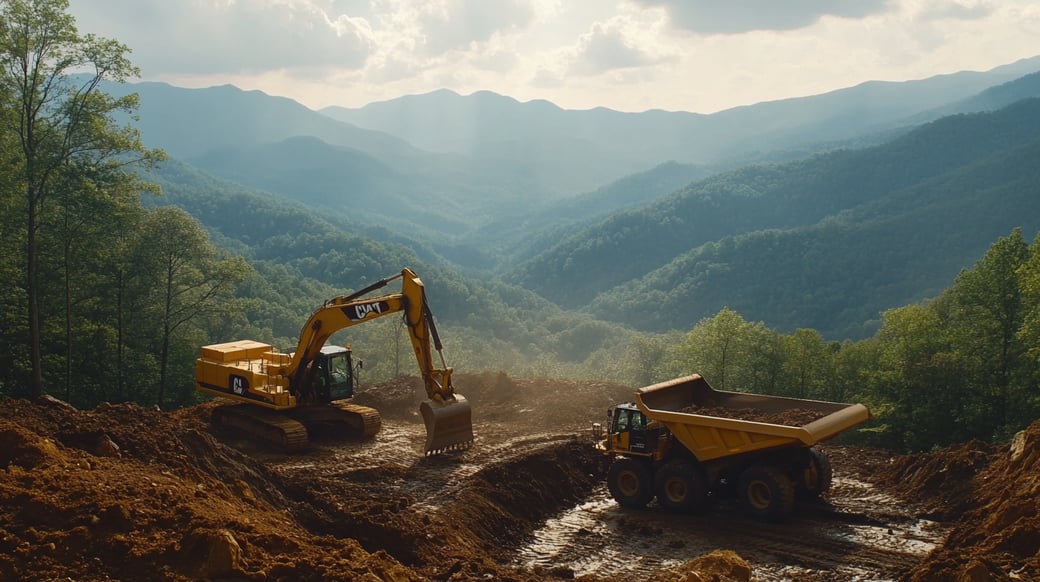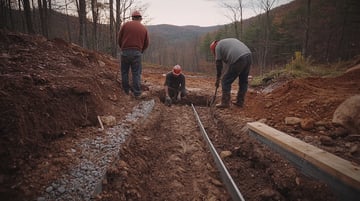
Preparing a House Seat in Appalachia: Challenges and Solutions
Building a home in the Appalachian Mountains offers stunning views and a unique connection to nature, but it also presents its own set of challenges—especially when it comes to preparing the house seat. The rugged terrain and steep slopes of Appalachia require careful planning, skilled execution, and specialized equipment to ensure a safe and stable foundation. Here’s a closer look at the process and some of the trickiest aspects of working with Appalachian slopes.
The Process of Preparing a House Seat
-
Site Evaluation and Planning The first step in preparing a house seat is evaluating the site. This involves analyzing the soil composition, drainage patterns, and slope gradients to determine the best placement for the home. In Appalachia, this step is crucial due to the region’s varied topography and potential for erosion.
-
Clearing the Site Before excavation can begin, the site must be cleared of trees, brush, and rocks. Removing vegetation on steep slopes requires precision to avoid destabilizing the soil and increasing the risk of erosion.
-
Excavation Using heavy equipment like excavators and skid-steers, the excavation team removes soil and levels the ground to create a stable foundation. On steep slopes, this often involves cutting into the hillside to create a level pad. It’s important to balance cutting and filling to minimize the movement of soil and maintain natural drainage patterns.
-
Erosion Control Once the house seat is excavated, erosion control measures are implemented. These may include silt fences, erosion control blankets, and strategically placed berms to direct water away from the site. In Appalachia, controlling water runoff is critical to prevent future foundation issues.
Challenges of Excavating on Slopes
1. Soil Stability
The mountainous terrain of Appalachia often consists of loose or rocky soil, which can shift during excavation. Proper grading and compaction are essential to ensure the soil can support the weight of the structure.
2. Water Management
Appalachia’s high rainfall and natural springs can complicate excavation. Water management systems, such as French drains and swales, are often necessary to redirect runoff and prevent water from pooling around the foundation.
3. Access and Equipment Placement
Steep slopes make it challenging to maneuver heavy machinery. Experienced operators must carefully position equipment to avoid tipping hazards while maintaining efficiency.
Solutions for a Rock-Solid House Seat
-
Retaining Walls: These structures stabilize slopes and provide additional support for the foundation. Options range from large concrete blocks to natural stone walls that blend with the landscape.
-
Terracing: Breaking up the slope into smaller, level sections reduces erosion and creates a more manageable construction site.
-
Revegetation: Planting grass or ground cover on disturbed areas helps stabilize the soil and reduces long-term erosion.
Partner with Experts for Mountain Excavation
Preparing a house seat in Appalachia requires a combination of technical expertise, local knowledge, and high-quality equipment. At Pinhook Excavation, we understand the unique challenges of building in the mountains and have the experience to deliver safe, reliable results. From site evaluation to erosion control, our team is committed to laying the groundwork for your dream home.
Ready to build your Appalachian retreat? Contact us today to learn how we can help bring your vision to life.
Related Insights

November 27, 2024
Gravel: The Versatile Solution for Construction and Landscaping
Gravel is a staple material in construction and landscaping, prized for its ...
November 27, 2024